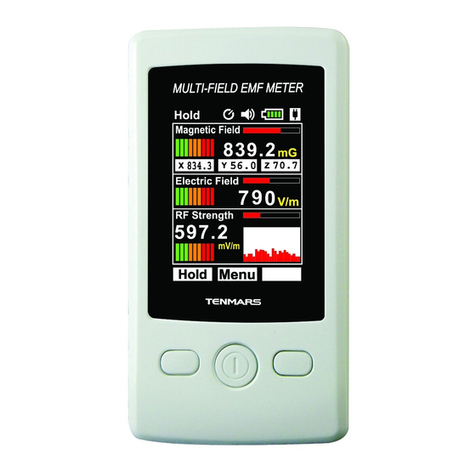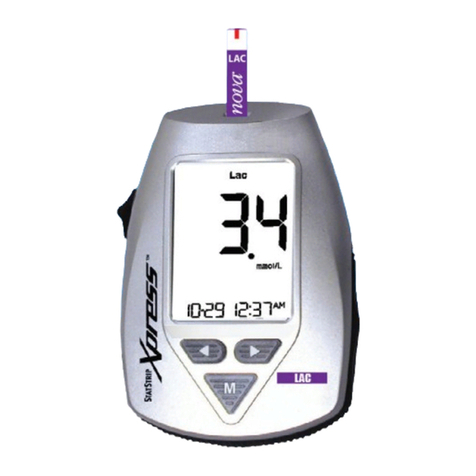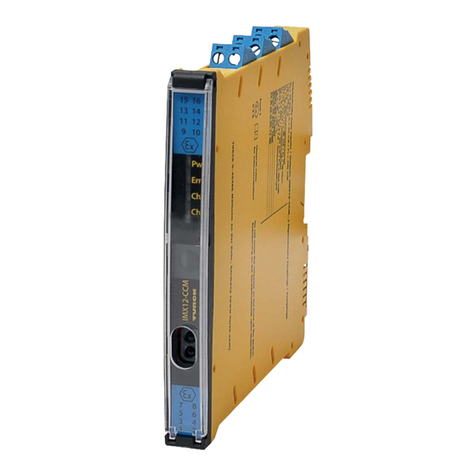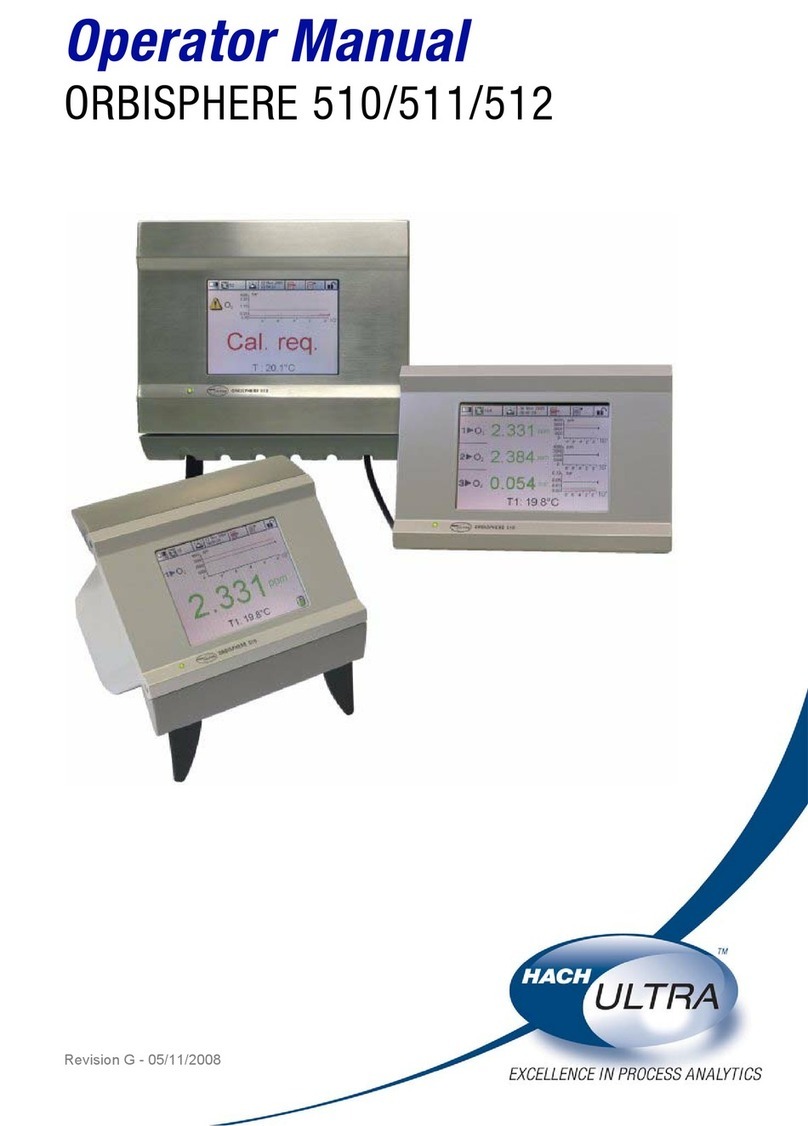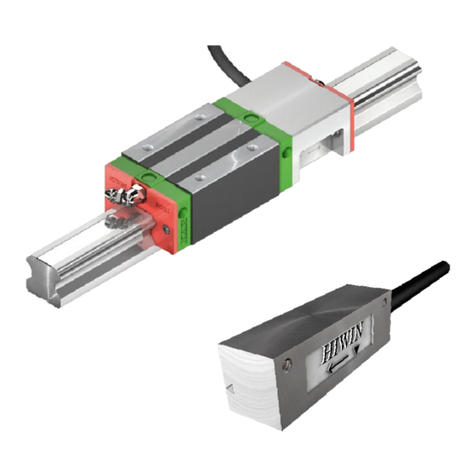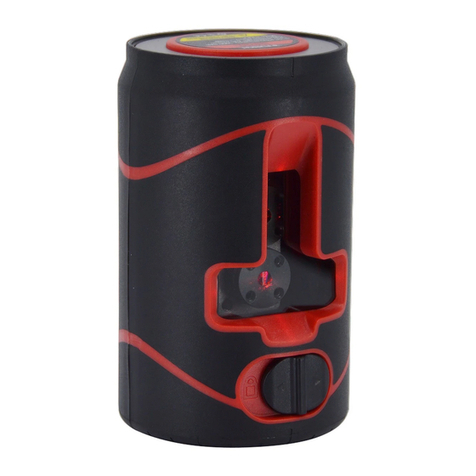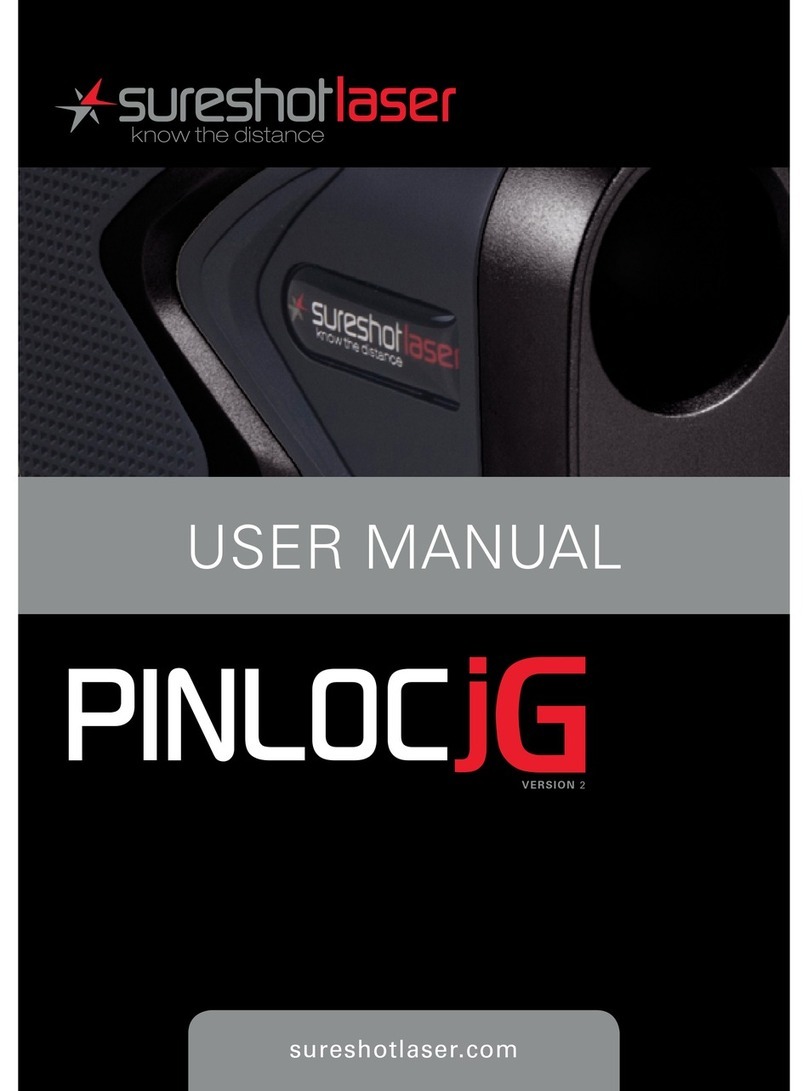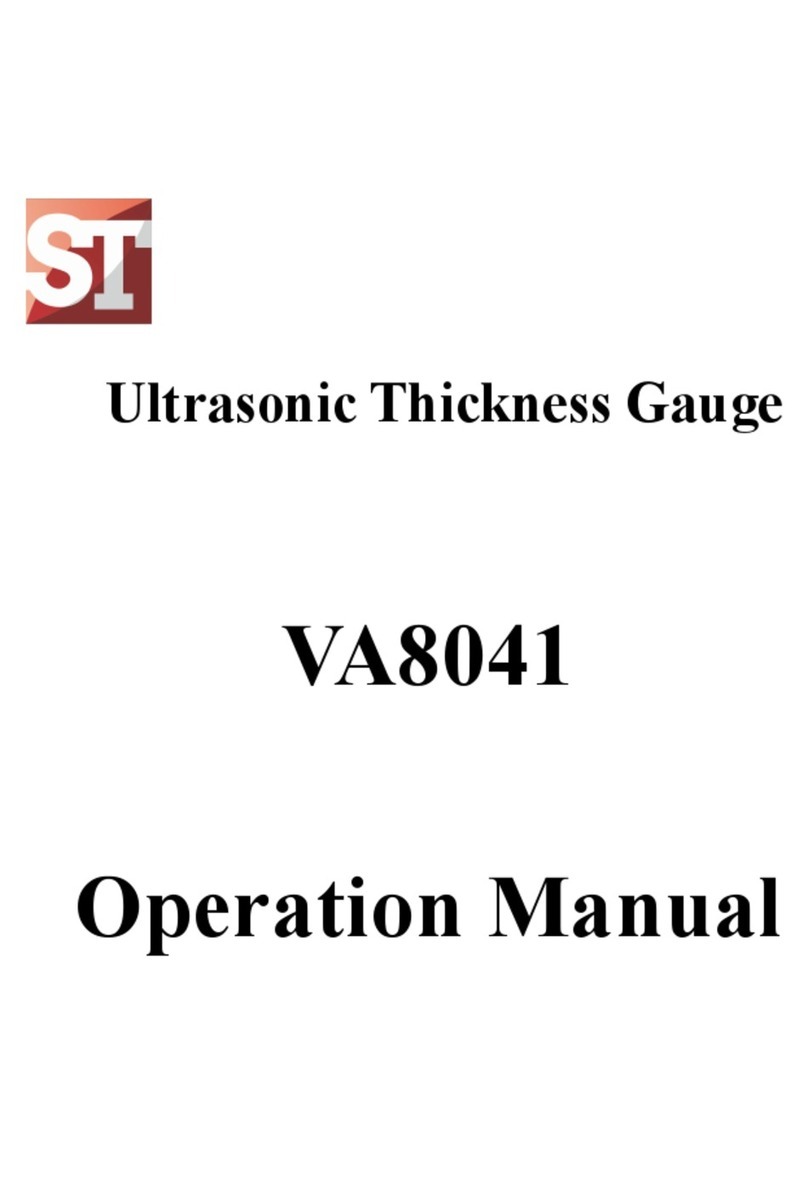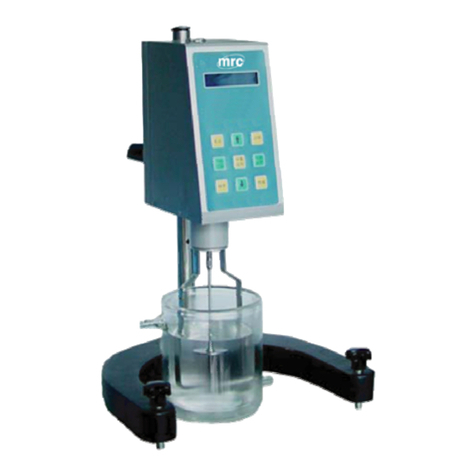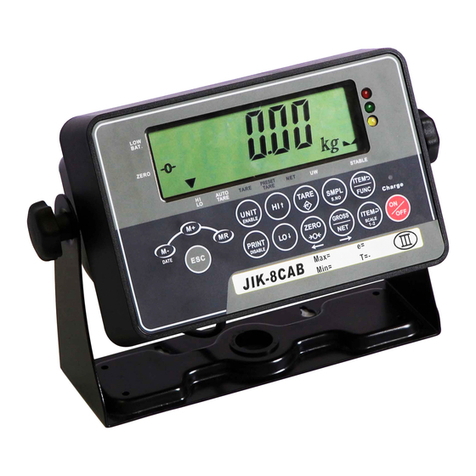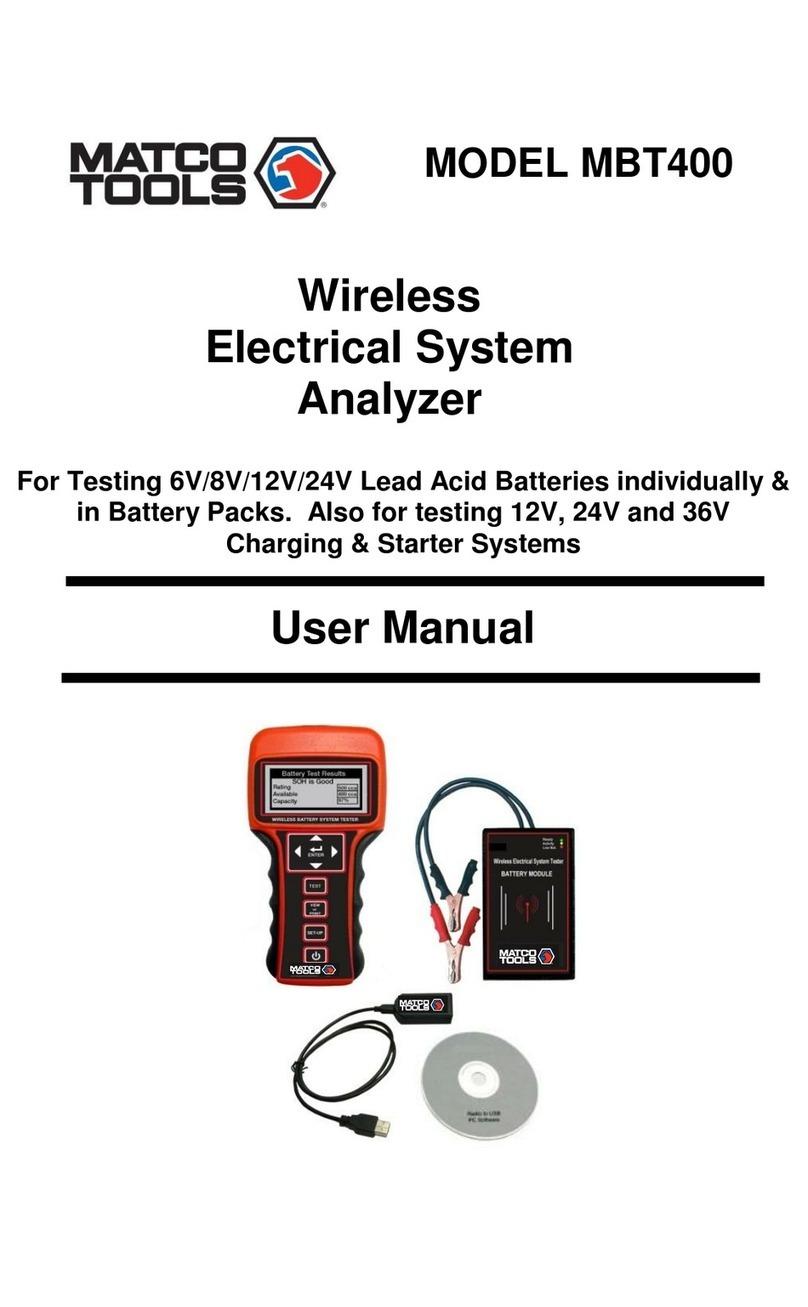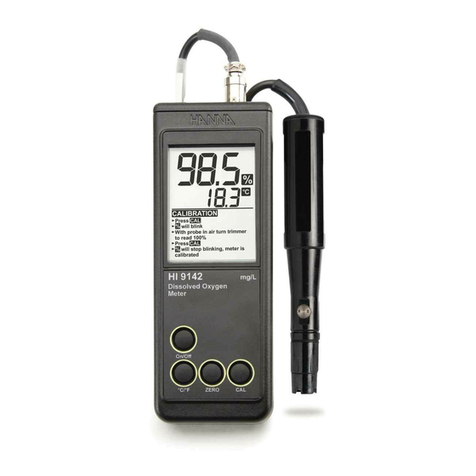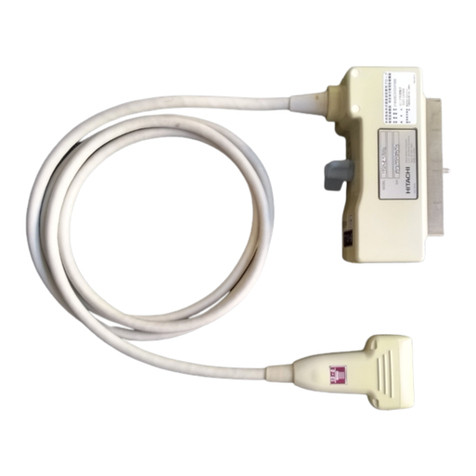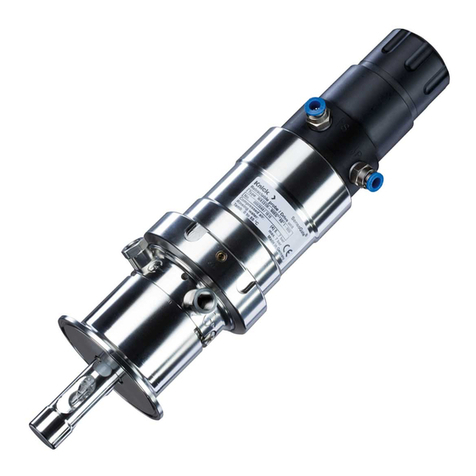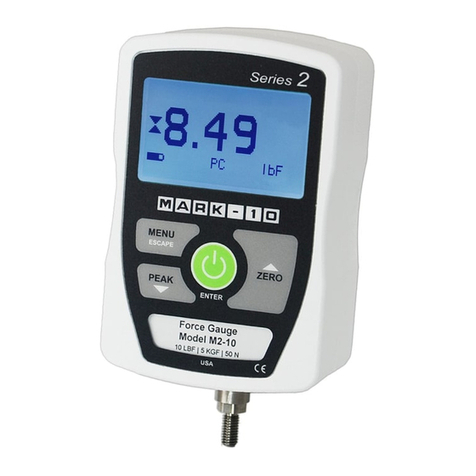Teledyne SP Devices ADQ7-FWATD User manual

ADQ7-FWATD
User Guide
Author(s): Teledyne SP Devices
Document no.: 17-1957
Classification: Public
Revision: PA6
Date: 2018-06-07

Classification Revision
Public PA6
Document Number Date
17-1957 2018-06-07
Contents
1 Introduction 3
1.1 Definitions&Abbreviations ................................... 3
2 Features 3
2.1 Specification ........................................... 3
2.2 Overview ............................................. 4
3 Getting Started 5
3.1 SDKInstallation ......................................... 6
3.1.1 Installing the SDK (Windows) . . . . . . . . . . . . . . . . . . . . . . . . . . . . . . 6
3.1.2 InstallingtheSDK(Linux) ................................ 6
3.1.3 Unsupported Software Features . . . . . . . . . . . . . . . . . . . . . . . . . . . . 6
3.2 CollectingData.......................................... 7
4 Detailed System Description 7
4.1 TriggerSetup........................................... 7
4.1.1 SoftwareTrigger ..................................... 7
4.1.2 LevelTrigger ....................................... 7
4.1.3 InternalTrigger...................................... 8
4.1.4 ExternalTrigger ..................................... 8
4.2 ConfigurableFIRFilter...................................... 8
4.3 SampleSkip ........................................... 8
4.4 AdvancedThreshold....................................... 9
4.4.1 ThresholdLogic ..................................... 9
4.4.2 Filter............................................ 9
4.5 WaveformAccumulator ..................................... 10
4.5.1 Partitioning ........................................ 11
4.5.2 Run-time Reconfiguration . . . . . . . . . . . . . . . . . . . . . . . . . . . . . . . . 11
4.6 DataStruct ............................................ 12
4.7 Robustness............................................ 12
4.7.1 OverflowBehavior .................................... 13
4.7.2 StatusCodes....................................... 13
4.8 CollectionModes......................................... 14
4.8.1 Single-shotMode .................................... 14
4.8.2 StreamingMode ..................................... 15
4.9 Converting from ADC Codes to Volts . . . . . . . . . . . . . . . . . . . . . . . . . . . . . . 17
4.10ADCCodeRanges........................................ 17
4.11Threading............................................. 17
5 User Application Example 18
5.1 Overview ............................................. 18
5.2 ModifyingSettings ........................................ 19
5.3 Compiling............................................. 19
ADQ7-FWATD User Guide www.teledyne-spdevices.com Page 1 of 26

Classification Revision
Public PA6
Document Number Date
17-1957 2018-06-07
5.4 DefaultBehavior ......................................... 19
5.5 InterpretingtheData....................................... 20
5.6 MATLAB.............................................. 20
6 Troubleshooting 21
6.1 ManagingLicenseFiles ..................................... 21
6.1.1 ReadingtheDNA .................................... 21
6.1.2 Updating the Digitizer License . . . . . . . . . . . . . . . . . . . . . . . . . . . . . 21
A Linux SDK README 23
ADQ7-FWATD User Guide www.teledyne-spdevices.com Page 2 of 26

Classification Revision
Public PA6
Document Number Date
17-1957 2018-06-07
1 Introduction
This document is the user guide of the ADQ7 digitizer running the advanced time-domain firmware
(-FWATD) option. For information on how to manage the firmware images of your device, please re-
fer to the ADQUpdater user guide [1].
1.1 Definitions & Abbreviations
Table 1lists the definitions and abbreviations used in this document and provides an explanation for each
entry.
Table 1: Definitions and abbreviations used in this document.
Term Explanation
1CH ADQ7 in 1-channel mode (10 GSPS)
2CH ADQ7 in 2-channel mode (5 GSPS)
ADC Analog-to-digital converter
AFE Analog front-end
API Application programming interface
ATD Advanced time-domain (firmware option)
DRAM Dynamic random access memory
FIR Finite impulse response
FW Firmware (digitizer feature set)
GSPS 109samples per second
RAM Random access memory
SDK Software development kit
WFA Waveform accumulation/accumulator
2 Features
This section presents the specification of ADQ7-FWATD along with brief descriptions of some of its core
features and limitations. Detailed information may be found in Section 4.
2.1 Specification
The specification for the advanced time-domain firmware is presented in Tab. 2. For the general speci-
fication of the ADQ7 digitizer, please refer to the ADQ7 data sheet [2].
The digitizer can be run in two main modes: 1-channel mode (at 10 GSPS) and 2-channel mode (at
5 GSPS). Switching between these two modes requires changing the firmware image. The ADQUpdater
user guide [1] provides details on how to perform the switch.
ADQ7-FWATD User Guide www.teledyne-spdevices.com Page 3 of 26

Classification Revision
Public PA6
Document Number Date
17-1957 2018-06-07
Table 2: ADQ7-FWATD specification
Item Min Typical Max Unit
Data path filter
Filter type Linear phase FIR
Filter order 16
Coefficient width 16 bits
Coefficient fractional width 14 bits
Coefficient value -2 2 - 2-14
Coefficient precision 2-14
Waveform accumulator
Waveform length (1CH) 32 2 097 152 samples
Waveform length (2CH) 16 1 048 576 samples
Waveform length 3.2 n200 µs
Length granularity (1CH) 32 samples
Length granularity (2CH) 16 samples
Length granularity 3.2 ns
Waveform dead-time 32 ns
Accumulation dead-time 32 ns
Number of accumulations 1 262 1441
Accumulation granularity 1
Advanced threshold filter
Filter type Linear phase FIR
Filter order 16
Coefficient width 16 bits
Coefficient fractional width 14 bits
Coefficient value -2 2 - 2-14
Coefficient precision 2-14
1Guaranteed safe scaling (32-bit accumulator).
2.2 Overview
Figure 1presents a block diagram outlining the main features of the data path.
•ADC
The data is sampled at 10 GSPS (1-channel mode) or at 5 GSPS (2-channel mode).
ADQ7-FWATD User Guide www.teledyne-spdevices.com Page 4 of 26

Classification Revision
Public PA6
Document Number Date
17-1957 2018-06-07
•Configurable FIR filter
A configurable linear phase FIR filter of order 16 is available and may be used for noise reduction
and bandwidth control. The function is described in detail in Section 4.2.
•Sample skip
The full-rate data stream may be downsampled by activating the sample skip functionality. This
function is usd to increase the measurement time, e.g. specifying a sample skip factor of two
translates to a doubling of the maximum observable time (now at 400 µs). Refer to Section 4.3 for
additional details.
•Advanced threshold function
The data may be subjected to an advanced thresholding function, isolating weak events and ef-
fectively increasing the dynamic range of the system.
•WFA (firmware/software)
The waveform accumulator resides partly in firmware and partly in software (inside the ADQAPI).
This structure offers flexibility and capabilities beyond what could be achieved by using the accu-
mulators separately.
Configurable
FIR filter Sample skip
WFA
(Firmware)
Advanced
threshold function
WFA
(Software)
Physical interface
ADC
Figure 1: A block diagram presenting the main features of the ADQ7-FWATD data path.
3 Getting Started
This section provides information on how to interface with ADQ7 and the ATD firmware. Table 3describes
the peripherals and their usage. Note that only the INX input should be used when the ADQ7 is running
in the 1-channel mode.
Table 3: Peripheral connections on ADQ7.
Connector Description
TRIG External trigger input / output
SYNC Sync trigger input / output
ADQ7-FWATD User Guide www.teledyne-spdevices.com Page 5 of 26

Classification Revision
Public PA6
Document Number Date
17-1957 2018-06-07
Connector Description
INX Channel A input (1CH)
INA Channel A input (2CH)
INB Channel B input (2CH)
CLK External reference clock input
3.1 SDK Installation
The Software Development Kit (SDK) contains the ADQAPI, drivers, examples and documentation re-
quired for successfully interfacing with the digitizer. The installation procedure for Microsoft Windows
and Linux is described in the following sections.
3.1.1 Installing the SDK (Windows)
For Microsoft Windows the SDK is installed by running
ADQ-setup_rXXXXX.exe
where XXXXX is the version number. After the installation the example code is located in
<Path to installation directory>/C_examples/
and the documentation in
<Path to installation directory>/Documentation/
3.1.2 Installing the SDK (Linux)
The SDK is supported for a number of Linux distributions and versions. The required files are all included
in
ADQ_SDK_linux_rXXXXX.tar.gz
where XXXXX is the version number. The archive contains the SDK installation files, example code and
documentation. The README file, located in the root directory of the archive, describes the installation
procedure in detail for the different distributions. The content of this file is also listed in Appendix A.
3.1.3 Unsupported Software Features
The provided SDK is used across a wide range of products. Therefore, some of the software is not
supported by ADQ7-FWATD, namely
•LabView is not supported.
•ADCaptureLab (Windows only application) is not supported.
ADQ7-FWATD User Guide www.teledyne-spdevices.com Page 6 of 26

Classification Revision
Public PA6
Document Number Date
17-1957 2018-06-07
•ADQUpdaterGUI (Windows only application) is not supported.
Important
ADQ7-FWATD is not supported by LabView, ADCaptureLab or the ADQUpdaterGUI.
3.2 Collecting Data
The FWATD C-example is provided together with the SDK. For Windows it is located in
<Path to installation directory>/C_examples/ADQAPI_FWATD_example
after installing the SDK, and for Linux in the
examples/fwatd_example
directory of the SDK archive. This example illustrates the capabilities of ADQ7-FWATD, and can be used
as-is. However, the example is primarily intended to be used as a guide for creating use case specific
applications.
4 Detailed System Description
This section provides additional details on important system features.
4.1 Trigger Setup
There are four available trigger sources: software-, level-, internal- and external trigger. The trigger
source is selected with SetTriggerMode(). Please refer to the ADQAPI reference guide [3] for informa-
tion on the argument list.
4.1.1 Software Trigger
The software trigger is issued by calling the API function SWTrig() and its main purpose is debugging.
One call to the function will generate exactly one trigger event on the digitizer. Multiple calls to the function
in rapid succession will not result in a trigger pattern with a well- defined period due to the non-real-time
behavior of most modern operating systems.
4.1.2 Level Trigger
The level trigger takes a 16-bit ADC code and an edge polarity as inputs and considers the first sample
after threshold has been crossed as the trigger point. To guard against false triggers caused by noise,
areset level has to be specified. This reset level is specified in absolute ADC codes and is used to arm
the level trigger mechanism by mandating that the data visits ADC codes below/above this level before
a new rising/falling trigger event may be generated. The level trigger achieves a resolution equal to the
sample rate.
ADQ7-FWATD User Guide www.teledyne-spdevices.com Page 7 of 26

Classification Revision
Public PA6
Document Number Date
17-1957 2018-06-07
4.1.3 Internal Trigger
The internal trigger period may be configured with sample resolution using SetInternalTriggerPeriod().
By default, the internal trigger is free running and triggers are normally gated with the device arming me-
chanism. However, the function SetInternalTriggerSyncMode() allows synchronization of the internal
trigger to some external event (detected on the TRIG connector).
4.1.4 External Trigger
The digitizer detects external trigger events on the TRIG connector with sample precision. The DC-
coupled input accepts a signal in the range [-0.5, 3.3] V and the detection threshold level may be confi-
gured using SetTriggerThresholdVoltage().
4.2 Configurable FIR Filter
The data path contains an order 16 linear phase FIR filter. This filter is placed before the sample skip
function which, if combined, enables proper decimation of the data stream.
The filter coefficients use a 16-bit 2’s complement representation with 14 fractional bits. Thus, the
representable range is
[-2, 2 - 2-14].
The properties of the filter yields a symmetric impulse response with the point of symmetry at coeffi-
cient h(8). The API function SetUserLogicFilter() is used to update the filter coefficients and expects
exactly 9 coefficients—up to and including the point of symmetry.
It is possible to specify the coefficients using a floating point representation. However, this is a fe-
ature provided for convenience and values will still be converted to fixed-point numbers before being
transferred to the device. The result of the rounding is visible in the device’s trace log file. Please refer
to the function’s entry in the ADQAPI reference guide [3] for more information.
Important
For convenience, the filter coefficients may be specified using a floating-point representation. Howe-
ver, these value are subjected to rounding as dictated by the argument rounding_method and conver-
ted to the filter’s fixed-point representation.
The filter output is subjected to symmetric rounding to 16 bits with rounding away from zero as the
tie-breaking rule, i.e. 0.5 ≈1and -0.5 ≈-1. Additionally, the output is saturated if the value is not
representable by the 16-bit 2’s complement representation used by the data.
4.3 Sample Skip
The sample skip function allows downsampling of the full-rate data stream. The set of allowed sample
skip factors depends on the firmware channel configuration. The 1-channel mode supports skip factors
in the set
{1, 2, 4, 8, 16, 32, 33, . . . , 65536}
and the 2-channel mode supports skip factors in the set
{1, 2, 4, 8, 16, 17, . . . , 65536}.
ADQ7-FWATD User Guide www.teledyne-spdevices.com Page 8 of 26

Classification Revision
Public PA6
Document Number Date
17-1957 2018-06-07
A skip factor of ’1’ implies no downsampling and is the default value.
4.4 Advanced Threshold
The advanced threshold function consists of a programmable FIR filter and decision logic aimed to single
out weak pulses from the surrounding noise. A block diagram of the function is presented in Fig. 2. Refer
to the firmware data sheet [4] for more information about the feature.
Linear phase
FIR filter
Threshold
comparison
Baseline
Data in
Data out
Group delay
compensation
Threshold
Data out
Filter
output
Data in
Figure 2: Block diagram of the advanced threshold function.
4.4.1 Threshold Logic
The threshold function consists of a multiplexer which selects between the baseline and the original data
on a sample-by-sample basis. The decision logic compares the user-defined threshold value to the filter
output and depending on the polarity, determines if the sample should be replaced by the baseline or
remain unchanged.
The data is substituted by the baseline value if the relation in (1) corresponding to the current polarity
is met.
y(n) < Tfor positive polarity
y(n) > Tfor negative polarity
(1)
In (1), y(n)is the filter output and Tis the user-defined threshold value. The parameters of the advanced
threshold feature are specified using the function ATDSetupThreshold().
4.4.2 Filter
The threshold filter is a linear phase FIR filter of order 16. The filter coefficients use a 16-bit 2’s comple-
ment representation with 14 fractional bits. Thus, the representable range is
[-2, 2 - 2-14].
ADQ7-FWATD User Guide www.teledyne-spdevices.com Page 9 of 26

Classification Revision
Public PA6
Document Number Date
17-1957 2018-06-07
The coefficients are specified using the function ATDSetThresholdFilter().
The filter output is subjected to symmetric rounding to 16 bits with rounding away from zero as the
tie-breaking rule, i.e. 0.5 ≈1and -0.5 ≈-1. Additionally, the output is saturated if the value is not
representable by the 16-bit 2’s complement representation used by the data.
Note
The filter output is subjected to symmetric rounding with rounding away from zero as the tie-breaking
rule and saturation if the value lies outside the representable range.
Because of the properties of the filter, the impulse response is symmetric around coefficient h(8) and only
coefficients up until that point are needed. Thus, the coefficient array argument in ATDSetThreshold-
Filter() will attempt to access 9 elements. If the allocated memory is less than expected, the call will
result in an memory access violation.
Important
The coefficient array argument in the call to ATDSetThresholdFilter() is expected to contain at least
9 elements, otherwise a memory access violation will occur.
4.5 Waveform Accumulator
The WFA on ADQ7-FWATD is partitioned, meaning that the work load is split between the digitizer and
the host computer. The WFA is composed of a 32-bit accumulator running in the digitizer’s FPGA working
in tandem with a second 32-bit accumulator, implemented in software and running in a separate thread
from the user application. Data is delivered to user space through a queue interface where the user
is responsible for allocating memory for the accumulated records and keeping the queue of available
memory from running out. Figure 3presents a block diagram of the ADQ7-FWATD structure, starting
from the digitizer and ending in user space.
Digitizer
ADQ7-FWATD ADQAPI
User Application
User space
Physical interface Queue interface
API layer
Firmware
32-bit accumulator 32-bit accumulator
Figure 3: A simple block diagram of the ADQ7-FWATD structure.
The ADC data is 14-bit, yielding codes in the range
[-8192, 8191].
Thus, the 32-bit accumulator guarantees that the ADC code with the largest absolute value, i.e. 8192,
can safely be accumulated 262 144 times without an arithmetic overflow occurring.
ADQ7-FWATD User Guide www.teledyne-spdevices.com Page 10 of 26

Classification Revision
Public PA6
Document Number Date
17-1957 2018-06-07
4.5.1 Partitioning
The user provides a desired number of accumulations, i.e. a number of records following each other
in time which should be accumulated and presented as one single record in user space. This number
is passed through a partitioning algorithm to determine how to divide the work load between the digiti-
zer and the host computer. The algorithm attempts to divide the work load so as to perform as many
accumulations as possible in hardware. However, this complex decision making process depends on
many factors, several of which are beyond the scope of this document. For example, the user defined
record length directly affects the partitioning. Since the on-board DRAM is finite in size, shorter records
will enable a higher number of accumulations to be performed in hardware while longer records shifts
the boundary in the other direction.
4.5.2 Run-time Reconfiguration
Changing the number of accumulations while a measurement is ongoing is possible by calling the ADQ-
API function ATDUpdateNofAccumulations(). When the function is called, the device will update the
accumulation grid at the next grid point in the current grid.
Note
The grid refers to the accumulation grid which is equivalent to the trigger grid downsampled with a
factor equal to the number of accumulations. For example, the accumulation grid period is
NA
ftrig
in a system using a constant trigger frequency ftrig and NAnumber of accumulations.
Timing is not guaranteed for this function, i.e. when the function is called, an unknown number of records
with the previous number of accumulations will propagate to the user space before the changes are
reflected in the received data.
There are two conditions which need to be met every time the user wishes to alter the accumulation
grid:
1. The WFA is running, i.e. a call to ATDUpdateNofAccumulations() may only occur after a call to
ATDStartWFA() and before a call to ATDStopWFA().
2. Any previous changes must have taken effect.
The meaning of ’taken effect’ is that the changes have been applied to the WFA engine and at least
one record reflecting the new settings has propagated through the system and been observed by the
ADQAPI.
If any condition is not met, the function will return with a negative return value indicating what went
wrong. Refer to the corresponding function description in the ADQAPI reference guide [3] for information
on how to interpret the return value.
ADQ7-FWATD User Guide www.teledyne-spdevices.com Page 11 of 26

Classification Revision
Public PA6
Document Number Date
17-1957 2018-06-07
4.6 Data Struct
The ADQ7-FWATD data struct is used to represent a record in user space and is used by all FWATD-
specific functions associated with handling data. The struct offers an intuitive abstraction of all parts
which together constitute a record: the metadata fields as well as the actual waveform data.
The struct is 32 B (after padding) and consists of the fields presented in Tab. 4where the first table
entry starts at byte zero.
Table 4: Contents of the ADQ7-FWATD data struct.
Field name Type Description
Timestamp uint64_t The time stamp of the first raw record in the ba-
tch.
Data int32_t * Pointer to memory where the record data is lo-
cated.
RecordNumber uint32_t The record number.
Status uint32_t System status at the point where the record was
collected. See Section 4.7.2 for details.
RecordsAccumulated uint32_t Number of accumulated records reflected in the
data.
Channel uint8_t The originating channel.
4.7 Robustness
To this end, ADQ7-FWATD features a data discarding mechanism to deal with the many different types
of overflow that may occur. The core concept is to discard data in a well-defined manner such that the
overall accumulation grid is preserved and corrupted records are prevented from propagating to the user
space.
The digitizer firmware is engineered as a well-balanced system, meaning no overflows can occur
due to internal effects. The first and most critical point in the system where overflows can occur is the
device-to-host interface, which connects the digitizer to the host computer. This connection is beyond the
complete control of the digitizer and determines the effective data transfer rate which directly translates to
the limits of the WFA settings. The digitizer on its own is a real-time system, but once the host computer
is included in the system view, this is no longer true as it is at the discretion of the operating system to
deliver the data to the user application.
Note
The most critical point is the device-to-host interface. The maximum data transfer rate translates into
the limits of the WFA settings.
The second critical point in the system is the queue interface which provides the user with accumulated
records as long as there is available memory. If there is no free memory to place the newly transferred
data, the data flow will stall and eventually cause data to be discarded.
ADQ7-FWATD User Guide www.teledyne-spdevices.com Page 12 of 26

Classification Revision
Public PA6
Document Number Date
17-1957 2018-06-07
Note
Another critical point is the queue interface which takes user provided references to memory and
returns the accumulation results.
Please be aware that the number of buffers needed to ensure stable operation is highly dependent on the
use case since the buffers circulate in the queue interface at a rate determined by the user application.
For example, 20 buffers may be enough to allow stable operations when writing the incoming records to
disk using a binary format while 50 may be required if instead, the data is formatted as ASCII.
There are strategies which could be used to design the user application in such a way that 20 queued
buffers will be sufficient in both cases.
Note
The number of queued buffers needed ensure stable operation of the system is highly dependent on
buffer handling in the user application.
4.7.1 Overflow Behavior
An overflow is caused by a stall of the data transfer interface for an extended period of time. This may in
turn be caused by an imbalance between the transfer bandwidth of the device-to-host interface and the
output data rate of the digitizer.
During an overflow, data collected up until that point (waiting to be transferred) remains intact and
incoming data is discarded in a well-defined manner. What ’well-defined’ means in detail is beyond
the scope of this document. However, the resulting user space behavior is worth commenting on. An
overflow will manifest itself in two possible ways, depending on the WFA settings and current work load
partitioning. Both of these events are completely discernible to the user by reading the record header
information.
1. A user space record will contain fewer number of accumulated waveforms than the defined number
of accumulations.
2. One or several user space records will be missing completely.
What is guaranteed not to happen is the corruption of data, e.g. that some sections of a user space
record are the result of Xaccumulated waveforms while Yis the number of accumulated waveforms for
other sections.
A different type of overflow occurs if the trigger rate is not well-matched to the record length. For
example, if the trigger period is 8 µs and the record length is 10 µs, the digitizer will still be recording
data for the previous record when the new trigger arrives. In this case the trigger is simply ignored,
causing the effective trigger period to be 16 µs.
Note
Triggers occurring while the previous record is not yet completed are ignored by the digitizer.
4.7.2 Status Codes
The status value reported in the data struct (Tab. 4) provides information on the overall health of the
WFA. The exact meaning of the value can be interpreted using Tab. 5.
ADQ7-FWATD User Guide www.teledyne-spdevices.com Page 13 of 26

Classification Revision
Public PA6
Document Number Date
17-1957 2018-06-07
Table 5: Status codes for the WFA.
Bit Description
3 Arithmetic overflow. One or several samples inside this record have been sa-
turated as result of an arithmetic operation yielding a value which could not be
represented.
2 Data has been lost within the record. The header field ‘RecordsAccumulated’ is
expected to report a lower value than the configured number of accumulations.
1 Buffer queue starving. When the ADQAPI requested a new buffer to place this
record, none were available, causing a stall of the device-to-host interface.
0 Records have been lost. The header field ‘RecordNumber’ is expected to reflect
that one or several records have been discarded.
For example, a status value of 0x3 indicates that one or several preceding records have been discarded
by the robustness mechanism. Additionally, the first attempt by the ADQAPI to retrieve a reference to
available memory failed, causing a stall. The stall occurs in the queue interface in Fig. 3due to the user
not having registered enough buffers.
4.8 Collection Modes
ADQ7-FWATD features two collection modes: single-shot and streaming. The modes are geared to-
wards different use cases, however the streaming mode is more general and is the recommended mode
of operation due to its relaxed memory requirements.
Note
The streaming mode is the recommended collection mode due to its relaxed memory requirements.
Common for both modes is that the user is responsible for allocating all the required memory at the start
of the application and later returning the memory once the application is about to close.
Important
The user is responsible for managing the memory used for data handling. At no point during collection
does the ADQAPI assume ownership of memory.
Refer to the ADQAPI reference guide [3] and the function ATDStartWFA() for details on how the different
modes are activated.
4.8.1 Single-shot Mode
The single-shot mode is intended for quick set up and capture of a sequence of events with well-defined
defined start and stop points and, more importantly, where it is not too costly to hold all the measurement
data in RAM.
The mode is not suitable for use cases where the user application uses the data to react in some
ADQ7-FWATD User Guide www.teledyne-spdevices.com Page 14 of 26

Classification Revision
Public PA6
Document Number Date
17-1957 2018-06-07
way, e.g. by automatically changing the experiment parameters, since the data is returned to the user
once the measurement has completed.
Since the single-shot mode is quite straight-forward to grasp and use, most of the discussion in this
document is centered around the streaming mode. Any mention of queues should indicate to the reader
that the streaming mode is being discussed.
4.8.2 Streaming Mode
The streaming mode is centered around the use of a queue interface to transfer data between the device
and the user, see Fig. 3. The user is responsible for keeping the queue filled with references to available
memory. The reuse of memory locations enables an unlimited amount of data using a limited amount of
memory.
Additionally, due to the continuous nature of the streaming mode, it is well suited for applications
which require a feedback mechanism to control devices placed earlier in the signal chain. However, the
loop delay cannot be given a constant value and will in practice depend on several factors, many of which
are beyond the control of the digitizer since the host computer is rarely using a real-time OS.
Data Collection Flowchart
Figure 4presents a flowchart of the data collection loop in the streaming mode. Entering the loop,
the digitizer is assumed to be configured according to the user’s specification in regards to the trigger
configuration, clock source, filter coefficients etc. In the text below buffer is synonymous to a user space
record but specifically means the host memory allocated to hold the data.
1. The first step in the outer loop is to set up the WFA engine by calling ATDSetupWFA(), specifying the
horizontal settings of the acquisition, i.e. the record length and any pre-trigger or trigger hold-off
values. Additionally, the number of accumulations per user space record as well as the number of
times to repeat the accumulation process, i.e. the number of user space records, is supplied as
arguments to this function. Furthermore, the memory allocated for the target buffers are registered
in the queue by calling ATDRegisterWFABuffer().
2. At this point, the WFA engine is primed and ready to collect data. The acquisition process is started
by calling ATDStartWFA(), arming the device. This function call launches a thread in the ADQAPI
which assumes control of the digitizer. Therefore, from this point on, it is crucial that the user only
calls supported thread-safe functions. Please refer to Section 4.11 for further details on threading.
3. Once the WFA engine is running, the application enters the inner loop, repeating until the expected
amount of data has been received and processed or some unexpected event occurs.
When data is ready to be transferred to user space, the function ATDWaitForWFABuffer() will
return a reference to one of the registered buffers, informing the user which buffer has updated
contents. At this point, the memory reference is forgotten by the ADQAPI. The user is expected
to manipulate the data in whatever way mandated by the use case and then register the memory
reference as available memory once again. Thus, the memory is reused and in theory enables
observation of an unlimited amount of data using a limited amount of memory.
4. Halting the WFA engine is carried out by calling ATDStopWFA() and then waiting for the internal
thread to close. The wait state is implemented by the function ATDWaitForWFACompletion() which
ADQ7-FWATD User Guide www.teledyne-spdevices.com Page 15 of 26

Classification Revision
Public PA6
Document Number Date
17-1957 2018-06-07
Set up WFA engine
ATDSetupWFA()
ATDRegisterWFABuffer()
Wait for data
ATDWaitForWFABuffer()
Return value?
0
Check status, handle data
Reinsert buffer into queue
ATDRegisterWFABuffer()
Stop
collection?
1
Pointer
value?
0
Timeout
Shut down WFA engine
ATDStopWFA()
ATDWaitForWFACompletion()
N Y
-2
Streaming thread
not running
Restart?
Digitizer
setup
YN
Return memory
Exit
Start WFA engine
ATDStartWFA()
1
2
3
4
5
Figure 4: Data collection flowchart for the streaming mode.
ADQ7-FWATD User Guide www.teledyne-spdevices.com Page 16 of 26

Classification Revision
Public PA6
Document Number Date
17-1957 2018-06-07
blocks until the thread has closed properly and returns its return value. At this point, the digitizer is
once again in the user’s control.
5. If the user wishes to restart the acquisition, another iteration of the outer loop is initiated. Otherwise,
the dynamically allocated memory is returned to the host and the application exits.
4.9 Converting from ADC Codes to Volts
The unit of the received data is ADC codes. The full scale input range is 1 V peak-to-peak. This is
mapped to the range [-214-1, 214-1 - 1], meaning one LSB is
LSBVolt =1
214 V.(2)
The ADC codes may then be converted to Volt by using (3).
XVolt =1
214 ·XADC (3)
4.10 ADC Code Ranges
Vertical settings in the ADQAPI are defined using 16-bit ADC codes, i.e. in the range
[-32768, 32767]
regardless of the digitizer resolution. In the case of ADQ7-FWATD, which delivers 14-bit data aligned
with the LSB at bit index zero. For example, this means that there will be difference of a factor of four
between the configured level trigger threshold value and the corresponding sample value in the user
space record.
Note
Vertical settings in the ADQAPI are defined using 16-bit ADC codes regardless of the digitizer resolution
while ADQ7-FWATD returns data which should be interpreted in the 14-bit range. For example, setting
the level trigger to ADC code 1024 corresponds to a sample value of 256 ADC codes in the user space
record.
4.11 Threading
The ADQAPI is not thread safe. This means that if the user wishes to communicate with the digitizer from
multiple threads in the application, a locking mechanism (implemented by the user) is required in order
to avoid race conditions and undefined behavior. Section 4.5 explained that the WFA is partitioned and
that the final accumulation step is performed in software by the ADQAPI. This accumulator is running in
its own thread and as such, while the data is being collected (i.e. after calling ATDStartWFA()), there are
only a few functions that are safe to call, namely
•ATDGetWFAStatus()
•ATDRegisterWFABuffer()
•ATDStopWFA()
ADQ7-FWATD User Guide www.teledyne-spdevices.com Page 17 of 26

Classification Revision
Public PA6
Document Number Date
17-1957 2018-06-07
•ATDUpdateNofAccumulations()
•ATDWaitForWFABuffer()
•ATDWaitForWFACompletion()
Warning
The ADQAPI is not thread safe. Calling API functions from multiple threads may yield undefined
behavior.
5 User Application Example
This section aims to explain how to write the core code in the user application interfacing to ADQ7-FWATD
by using the provided C code as an example.
The ADQAPI reference guide [3] lists all the functions available in the ADQAPI and is a good supple-
mentary source of information. Please note that not all functions are valid for ADQ7.
5.1 Overview
The code implementing the digitizer interface in the user application centers around memory manage-
ment, configuration, running the measurement and reacting to any unexpected events in a way that
makes sense in the context of the user application.
Since ADQ7-FWATD extends the functionality of the base product, ADQ7-FWDAQ, almost all of the
functions listed as valid for ADQ7 in the ADQAPI reference guide [3] are valid for ADQ7-FWATD as
well. This includes functions handling trigger configuration, adjustable bias in the analog front-end, di-
gital baseline stabilization, clocking etc. The exceptions are the data management functions where the
FWATD-specific functions should be used instead of the general streaming functions.
The example is divided into five parts and the principal actions should be imitated in any code inter-
facing to ADQ7-FWATD.
Parameter definition
The digitizer settings are defined in this step together with the allocation of static memory.
Memory allocation
The application dynamically allocates system memory to be used as target buffers, used to shuttle
data between the API and user space.
Digitizer setup
Based on the defined parameters, relevant API functions are called to carry out the digitizer con-
figuration. The order of operations does not matter in this step as long as no data collection
functions are called and the digitizer is disarmed (default state).
Data collection
The heart of the application is the data collection loop. There are two versions, controlled by the
define SINGLE_SHOT_COLLECTION (disabled by default). The define will cause either the streaming-
ADQ7-FWATD User Guide www.teledyne-spdevices.com Page 18 of 26

Classification Revision
Public PA6
Document Number Date
17-1957 2018-06-07
or the single-shot version of the data collection loop to execute. The implementation of the
single-shot mode is straight-forward and while its simplicity may seem attractive, it is not wit-
hout drawbacks (see Section 4.8.1). The more powerful streaming mode is described further in
Section 4.8.2.
Returning memory
Finally, any dynamically allocated memory is returned to the host computer.
5.2 Modifying Settings
The digitizer configuration parameters reside in the file example_adq7.c immediately following the de-
claration of the function adq7(). The example code is filled with comments intended to guide the user in
choosing the parameters.
5.3 Compiling
Compiling the example application is accomplished by generating object files from the three source files
and linking to the ADQAPI. A simple make file for Linux systems is provided as well as a Microsoft Visual
Studio solution.
5.4 Default Behavior
By default, the test pattern generator and level trigger are activated. This means that the example can
be run out of the box and data will be received even without connecting any input signals or triggers. The
test pattern can be deactivated by changing the test pattern mode from ‘4’ to ‘0’ on the following line:
const int test_pattern_mode = 4;
The test pattern is 16 bits whereas the accumulator is 14 bits. Therefore, the test pattern will update
every fourth samples. For example, the raw data stream will follow the pattern
N, N, N, N, N+1, N+1, N+1, N+1, N+2, ...
for the positive slope, and equivalently
N, N, N, N, N-1, N-1, N-1, N-1, N-2, ...
for the negative slope.
Note
The samples will update in groups of four if the test pattern is enabled.
The C example has no built-in plotting. Instead, the data is written to file. Channel 1 is written to
dataA.out and channel 2 is written to dataB.out for the 2-channel firmware. For the 1-channel (10 GSPS)
firmware, the data is written to dataA.out.
Note
If file writing is activated, the data is written to dataA.out and dataB.out.
The data can either be stored in ASCII or binary format. The format is specified with
ADQ7-FWATD User Guide www.teledyne-spdevices.com Page 19 of 26
Table of contents
Other Teledyne SP Devices Measuring Instrument manuals

Teledyne SP Devices
Teledyne SP Devices ADQ7 User manual
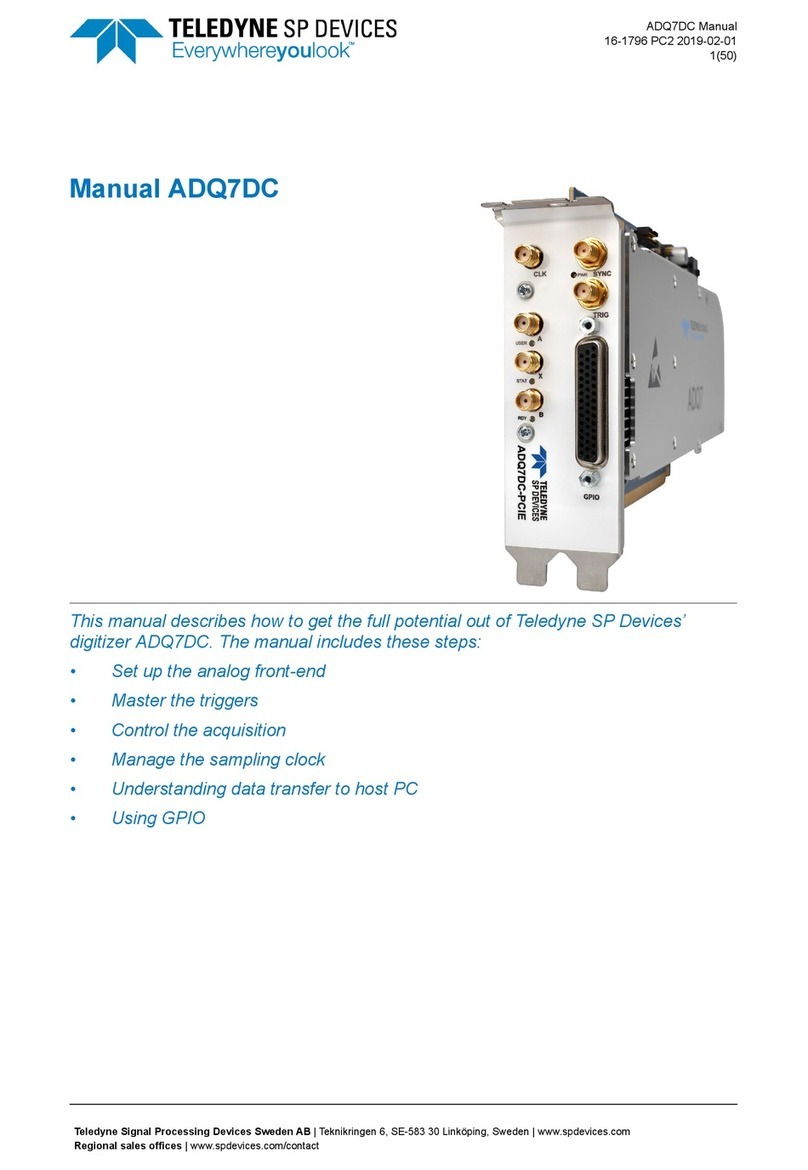
Teledyne SP Devices
Teledyne SP Devices ADQ7DC User manual

Teledyne SP Devices
Teledyne SP Devices ADQ14-FWPD User manual
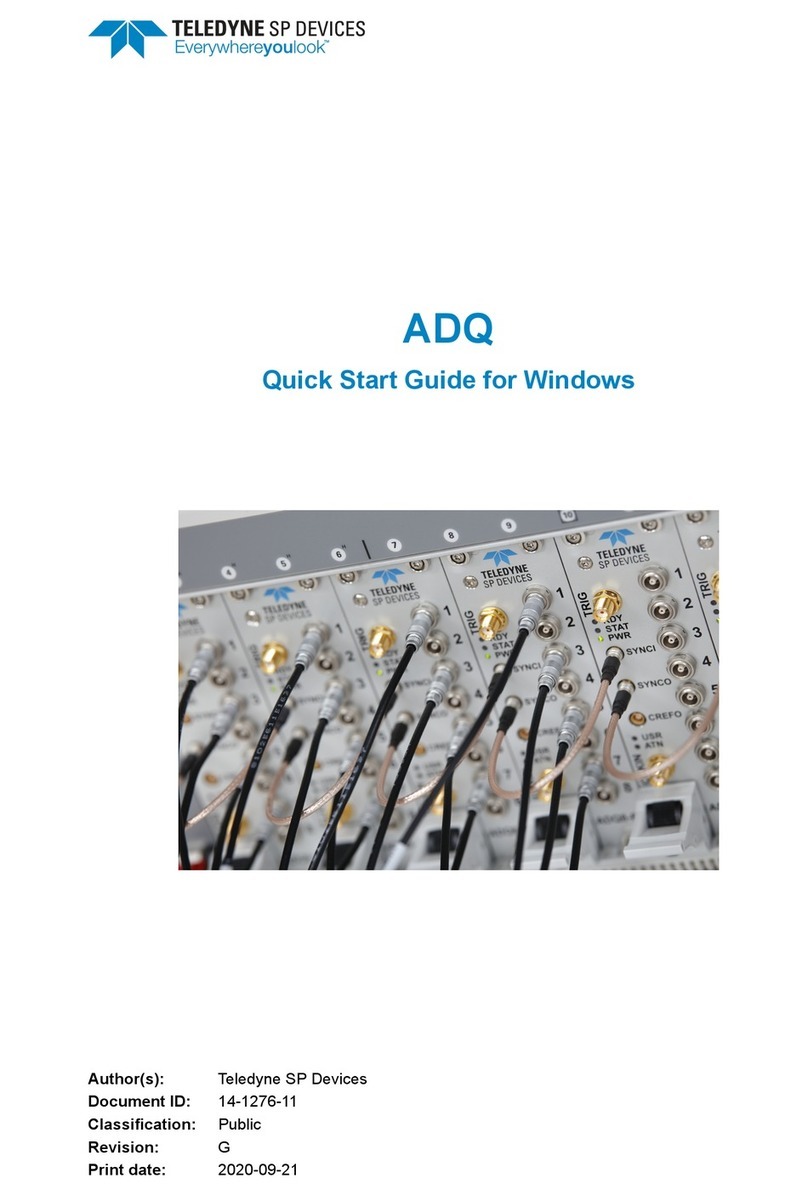
Teledyne SP Devices
Teledyne SP Devices ADQ User manual

Teledyne SP Devices
Teledyne SP Devices ADQ7 User manual
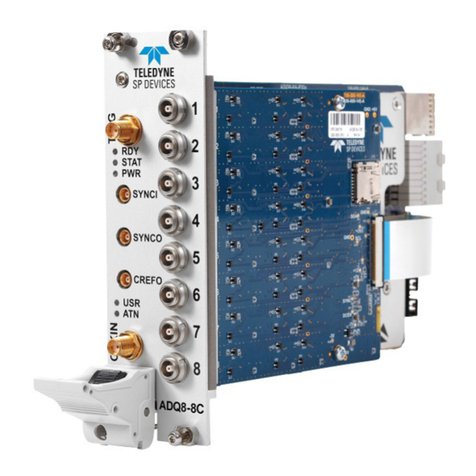
Teledyne SP Devices
Teledyne SP Devices ADQ8-8C User manual
